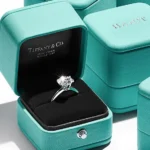Neuroscience proves that storytelling is the greatest approach to holding people’s attention, embedding knowledge in their memory, and establishing intimate, personal ties because the human brain is built to react to well-crafted stories. Great tales are what your audience is trained to seek out and want, and that won’t change.
It might be difficult to exercise a creative muscle that has steadily withered away from inactivity since we’ve spent the bulk of our lives refining content for algorithms.
We’ve developed a guide about the fundamentals of brand story structure and given examples of brands that have used their brand stories to resonate with huge audiences, despite their relatively small size, in order to help you flex your creative muscles and write compelling stories once more.
What is a Brand Story?
A brand story explains how the sequence of occasions that led to the founding of your business still expresses your goal today. Your audience will remember you, feel empathy for you, and eventually care about you if you can create a compelling brand story, much like the characters in your favorite novels and movies.
A story must evoke an emotional response, unlike conventional advertising, which focuses on showing and informing about your business. It is a whole image made up of events, emotions, and interpretations, so you aren’t even the one who tells that portion of the tale.
Everything you do, every aspect of your company or brand, from the colors and textures of your packaging and business cards to the people you recruit, is a reflection of your brand narrative, and each piece should give your audience a true understanding of your brand.
Why is a brand Story necessary?
Consider each small company you do business with and consider the reasons you do so.
For instance, I steered clear of the major retailers when I needed to purchase my son’s first pair of walking shoes and instead went to a tiny shop that exclusively sells shoes for kids. The shop’s proprietor had a prior career in the shoe business. She personally assisted us in choosing the appropriate shoes and explained what sort of footwear we should purchase to help my kid walk more comfortably.
Build brand awareness and help you stand out.
A brand is an impactful promise of value and experience. It has a character, a meaning, a voice, a message, and a set of values and beliefs. It is special and belongs to YOU. Compared to product life cycles, brand life cycles are longer.
Stories have an emotional impact.
While goods typically offer immediate practical advantages, stories promise customers emotional experiences and rewards.
According to research, individuals make more purchases based on their emotions before using logic to support such purchases. As a result, engaging in brand storytelling rather than just developing marketing messaging about your items will encourage your target audience to buy your product.
An engaging brand Story may attract funding
A well-told Story of a brand, with a clear vision, may not only help your audience connect with you and purchase from you but also acquire the confidence and investment of venture capitalists and other financial investors in addition to bringing in customers and leads.
To discover how every pitch begins with a brand narrative and how it affects the investor’s choices, watch any episode of Dragon Den.
Brands encourage repeat business
Have you ever found yourself in a scenario where you only loved one product out of many? But since the service was so good and you felt that the brand was tied to you and that you believed in it, you just kept your commitment to it? maybe even continued to suggest it to others?
Consider Nike’s most recent Coepernick advertisement. The real strength of brand storytelling lies in this.
Who Writes the Story of Your Brand?
It is incorrect to believe that after writing a narrative, your brand story is complete. The remainder of your brand story is what your consumers write about it, including how they feel, their experiences, social media debates, and more. Storytelling is in the public domain.
Have you ever questioned why businesses are so driven to encourage their consumers to submit reviews and comments? They are not only seeking reassurance that the goods or services provided by their business were of high quality. Additionally, they are looking for chances to strengthen their brand story by igniting debates and ensuring that the message is widely disseminated.
It is revolutionary to change the direction of information flow in a society where there was just a one-way flow from the business to the customer. People saw enterprises as something abstract ten years ago. They saw them as a machine that provided goods in exchange for payment. Customers nowadays are aware of their worth. They are aware that businesses care for each customer because their word has power.
Your Opinion Counts
It is incorrect to believe that businesses are powerless, nevertheless. They may still create the mission to guide their brand story. Customers should be aware of the values held by the businesses they like. Every brand should have its own voice for this.
Have you ever wondered why Apple shops often have long lines of customers waiting for their latest products?
Even if they do not sell inexpensive goods, it seems that many people are eager to part with their cash—often in large amounts—for a brand-new iPhone. The business stands for innovation. They lead consumers to assume that by acquiring Apple goods, they are also creative. People purchase their items despite the fact that they do provide unique innovations because of the company’s message, voice, and appearance of exclusivity.
As a result, in order for your product or service to succeed and for your firm to grow, you must communicate clearly with both your current and future clients about the societal motivations driving your enterprise. They will feel, experience, and know that your company cares about their beliefs, interests, goals, and needs as a result of this voice speaking to their hearts and minds. Most of the time, this voice is more important than the cost and accessibility of the product. Because they are emotionally connected to your brand.
How Can You Craft a Strong Brand Story?
It’s not simple to create a story about your brand. It calls for excellent writing abilities and in-depth familiarity with your target market and corporate objectives. People need to catch the soul of your brand. So here are the eight stages to creating a fantastic brand narrative.
1. Describe your brand’s mission and personality
To achieve engaging and successful storytelling, your company objective must be clearly stated. Your company’s values and mission statement should inform every engagement and conversation you have with clients.
Determine your brand’s personality and voice after you have your mission statement and principles and are aware of what distinguishes your company from others in the industry. You may use our Brand Personality Matrix to your advantage here.
As you create the brand story that will communicate your business’s values, keep coming back to your purpose and brand personality.
2. Make It Look Good
Making your story human is the greatest approach to making it attractive. Starting with your clients’ motives, inclinations, feelings, and wants can help them connect with your brand and stop seeing it as an impersonal entity. Express your interests or the difficulties your company has faced that have developed the brand. Describe how the clientele and their experiences have shaped the company’s philosophy.
You might use case studies or employee testimonies in your story to further humanize it. As shown below, Wholefoods does a good job doing this on their website. You may harness it for your brand story based on what matters most to you as a business.
3. Research storytelling
Writing that tells a story in particular requires certain techniques. You must understand what most stories have in common in order to develop your brand story. The focal point of your narrative should be the primary characters, followed by some crucial information to retain the audience’s interest (conflict), and finally, a revelation.
If your tale entices people to keep reading, that’s a positive sign. Even better is if your tale inspires prospective buyers to learn more about your brand. To draw readers in and keep them on the edge of their seats, you must emphasize the tension in your story.
It’s not necessary to compose a lengthy story. Make your readers go from the inception of your company concept to the present situation. Choose the major characters and give them a voice by expressing the ideals of your company. Read your narrative aloud once you’re finished to make sure it flows.
4. Create Your Main Characters
It’s OK if the genuine character you’re basing your story on doesn’t exist. It could be told by a made-up person. While communicating the truth about your brand, you may give them any voice and any position you desire. Consider Ronald McDonald from the perspective of McDonald’s. He is a made-up figure who has been telling brand stories for decades, long before content marketing became an important aspect of marketing.
5. Add Visuals
You must make your narrative live if you want it to stick to your clients’ thoughts. You may communicate more clearly and improve knowledge retention by using photos and other visuals. Consider how visual communication was before the development of languages among the cavemen. Always keep in mind that you may use images to make your message more vivid anytime you feel that your argument is weak or your tale needs force.
6. Maintain Consistency
Try to uphold all the values you say you believe in. Since customers are adept at identifying dishonesty, it is preferable to maintain consistency. Any inconsistency that can mislead your consumer should be avoided. Bear in mind that they will depend on their senses. You may lose some of your audience if they believe you betrayed their confidence.
7. Try to change things
Customers find it crucial to understand how you want to distinguish. If your brand narrative makes reference to widespread societal issues that were addressed inside your workplace, it is beneficial. It is much better if you can describe how you work to improve the world by addressing issues at the local level.
8. Get Your Story Going
Okay, you’ve got a story now. Next, what? You now need to communicate it to your prospective consumers in an effective manner. You need market activation. Consider where your buyer would be most likely to locate your brand narrative to help with this. It could be published in a magazine, website, email, or on social media.
Keep in mind that your marketing staff has to be familiar with your brand story just as much as your consumers do. They may develop marketing strategies and campaigns that are in line with your main objectives by using a well-written brand story. If this is effective, lead creation will come organically as a result of your brand narrative.
In light of this, the following are the top five rules for writing an engaging brand story.
Rules for Writing an Engaging Brand Story
1. Begin from the customer’s perspective
Your brand’s story must be concise, unambiguous, and in line with the requirements and preferences of your target audience. It has to be audacious and promote discovery.
2. Simplify a Difficult Problem or Issue
Explain in simple terms “Why” the brand matters or what benefits the consumer receives from it. This question has to be addressed simply via the use of a fantastic story since most consumers don’t have the time or desire to attempt to figure this out on their own.
3. Arouse the customers’ emotions
Give customers a reason to care. People don’t make reasonable, sensible purchases because they are trying to. They make emotionally charged judgments, which they then rationalize with facts.
Whether your audience sees your story as merely another transactional interaction or as one that emotionally connects with their career or a personal path, there is a significant difference.
Great marketers tell purposeful brand stories, not just good ones.
4. Make a lasting impression by striking a chord that makes you think
When people see or hear your brand, what do you want them to think? People will be more interested in a story if they can connect to it, as opposed to hearing fact-filled arguments for a product.
5. Make your client the protagonist of the story
When the audience can see themselves as the protagonist, the story has a powerful impact. Customers must be made the hero, and the brand must act as a guide. The hero is more likely to invite you into their world (and their story) if your purpose shifts from control to participation. For increased client engagement, you may start by putting your attention on experience-based activities.
Make your customers the protagonist of your story.
Great brand stories examples
Old Spice
Despite the fact that their product lacks glitz, Old Spice breaks tradition by generating inventive and amusing advertisements that portray their antiperspirant as a joyful complement to one’s life rather than a cause of embarrassment. Along with its renowned ads, the company has embraced creative material to interact with its fans, such as selling its theme music as a downloadable ringtone. One noteworthy endeavor is their School of Swagger, an online resource that provides instruction and amusement to young males as they negotiate the rigors of puberty—when antiperspirant becomes vital. Old Spice goes above and above to help mothers through their kids’ adolescence with the hilarious e-book “The Struggle Is Real: A Wild Guide to Growing-Up for Moms & Sons.” Old Spice becomes a valued companion and a helpful friend by handling once-embarrassing themes with humor and kindness.
GoPro
The ability to capture the action as it happens was a photographic need that no other firm had addressed. Their whole brand history is presented in a conventional format on the About Us section of their website. It’s simple to comprehend, the brand’s principles are obvious, and we can grasp GoPro’s goals but at the same time, they make sure that its consumers are involved.
Nick Woodman, an extreme sports enthusiast who sought a better means to capture his pals surfing, launched the business. Their initial model is also described in the story, which gives it further depth and humility.
The users of their goods “humiliate and excite us every day with great ingenuity that lets us view the world in an all-new way, and burns us up to keep making the most wonderful, creative things imaginable,” the brand story of their customers continues.
The GoPro story demonstrates how important their consumers are to the brand, creating a bond and respect for the business. In their last paragraph, they describe how GoPro is a company that makes people’s lives better by enabling them to “enjoy the moment” and “record life as you live it, share the experience.”
Airbnb
By allowing visitors to forgo conventional lodging alternatives and reserve unique lodgings directly from local hosts, Airbnb also transformed its sector.
The Airbnb story, though, is no longer about upsetting the hotel business. Instead, it’s about having the freedom to design a custom trip and being able to explore new places like a native. Videos on unusual, regional experiences, like this one about a UK clog manufacturer, may be seen on their YouTube page.
The brand story of Airbnb has changed from being focused on the hospitality sector to now being focused on its consumers, the contemporary traveler. Now, it’s just about persuading these tourists to go to other locations.
It’s significant that their brand story has changed. They’ve come to the conclusion that because they are a market leader, they are no longer required to discuss their platform. Airbnb is conscious that its target market, tourists who seek unique travel experiences, is already familiar with the company. To win over clients and secure their business, one should just insist that Airbnb is the ideal choice for such an event.
Finishing up
It takes time and effort to create a compelling brand story. You must communicate your background, principles, interests, and goals in a manner that will help your target audience relate to you emotionally. Understanding your clients, staff, and rivals is a good place to start. You should also be certain of the characteristics that distinguish your company from the competition.
Your brand story has to be genuine and consistent, which is more crucial. To successfully engage with clients that are really connected with your brand, it must be directly in line with your mission statement.






![Difference between advertising and promotion [Explained]](https://naumandigital.com/wp-content/uploads/2023/02/19-600x400.jpg)

![Top 10 Best PR Campaigns of 2022 [Winning the PR Game]](https://naumandigital.com/wp-content/uploads/2023/02/7-600x400.jpg)
![What Does A Brand Manager Do [Guide to becoming a brand manager]](https://naumandigital.com/wp-content/uploads/2023/02/14-600x400.jpg)